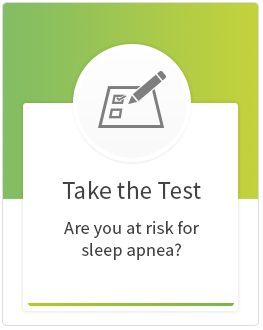(Click on the questions below to see the answers)
As suggested in self-diagnosing quizzes such as STOP BANG and Epworth, the list of most common symptoms includes:
- Snoring that is loud, gasping
- Tiredness, fatigue, sleepiness during the day
- Breathing cessation observed by others
Others include:
- Sexual dysfunction
- Waking up with: sore or dry throat or a choking or gasping sensation
- Lack of energy during the day
- Morning headaches
- Restless sleep
- Forgetfulness, mood changes, and a decreased interest in sex
- Recurrent awakenings or insomnia
- Weight gain
- Memory, concentration, learning problems
- Feeling irritable, depressed, or having mood swings or personality changes
- Night sweats
- Obesity: body mass index over 28
- Large neck size: more than 16 inches for women, 17 for men
- Being male over age 50
- Narrow airways
- Enlarged tongue and/or tonsils
Risks of accidents and poor function are related largely to sleepiness, but apneas can also be life threatening due to inadequate oxygen inhalation, or conversely, inadequate carbon dioxide exhalation. Therefore serious risks include:
- Hypertension/high blood pressure
- Diabetes due to poorer glucose control in those with type 2 diabetes
- Heart disease, including heart failure
- Driving and work-related accidents
- Stroke
Especially compared to the serious risks of having no treatment, dental sleep treatment risks are relatively rare and minor for the patients who are candidates to receive treatment. The primary side effects noted below typically subside within 7-14 days.
- Tooth, muscular, or jaw joint discomfort
- Excessive salivation
- Nausea
- Tooth movement or bite changes
- Dry/chapped lips
Devices should be immediately removed if more serious issues arise such as:
- Respiratory problems and blockages of the respiratory path.
- Infections
- Loose teeth
- Allergic reactions such as rash or irritation
Please speak to your dentist directly to find out costs and coverage of your health plan.
Clean your OPTISLEEP appliance thoroughly every morning using a soft toothbrush under warm running water. Please refer to the application and care instructions for further cleaning tips.
Always store your appliance in the OPTISLEEP storage container after it has first been cleaned and dried following each use.
A damaged or broken therapeutic appliance may no longer be used because of risk of injury. Please contact your dentist immediately.


